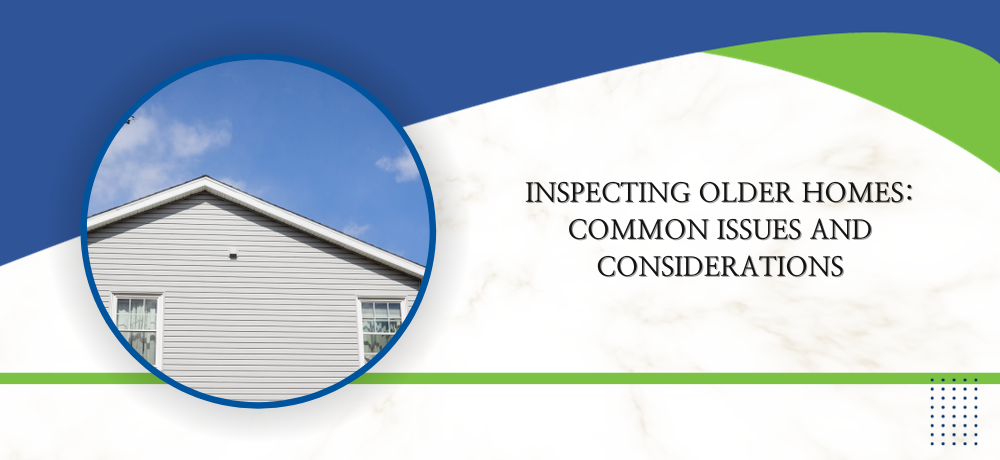
Inspecting Older Homes: Common Issues and Considerations
- Summit Property Inspectors
Homebuyers or owners of older properties often face unique issues that require a thorough inspection. In this blog, we'll delve into the common issues associated with older homes and the essential considerations to keep in mind during the inspection process.
Foundation Concerns:
Older homes often face foundation issues due to natural settling, soil movement, or poor construction practices of the past. Inspectors should look for cracks in the foundation, both inside and outside the home. Uneven floors, doors that don't close properly, or visible gaps between the foundation and the house are signs of potential foundation problems. Addressing foundation issues early is crucial to prevent further structural damage.
Electrical Wiring and Systems:
Older homes might have outdated electrical systems that are not up to current safety standards. Common issues include outdated wiring, insufficient electrical capacity, or the use of now-banned materials like knob-and-tube wiring. Inspectors should check for exposed wires, outdated outlets, and the overall condition of the electrical panel. Upgrading the electrical system may be necessary to ensure safety and compliance with modern standards.
Lead Paint and Asbestos:
Homes built before the late 1970s may contain lead-based paint and asbestos, both of which pose serious health risks. Inspectors should be vigilant in identifying these materials, especially if the paint is deteriorating or there is damage to asbestos-containing materials. Remediation may be required to ensure a safe living environment, and it's important for homeowners to be aware of these hazards.
Plumbing Issues:
Older homes often have outdated plumbing systems that may be prone to leaks, corrosion, or blockages. Inspectors should examine the pipes, check for water stains, and assess the condition of fixtures. Galvanized steel pipes, commonly used in older homes, may have corroded over time. Upgrading plumbing systems may be necessary to prevent leaks, improve water pressure, and ensure the proper functioning of plumbing fixtures.
Inadequate Insulation and Ventilation:
Many older homes lack the energy efficiency features present in modern construction. Poor insulation and ventilation can result in higher energy bills, uncomfortable living conditions, and potential issues like mold growth. Inspectors should assess the insulation in walls, attics, and crawl spaces. Additionally, they should check the ventilation systems to ensure proper airflow. Upgrading insulation and ventilation can enhance energy efficiency and the overall comfort of the home.
Inspecting older homes requires a keen eye and a deep understanding of the unique challenges they present. By addressing common issues in foundations, electrical systems, plumbing, roofing, and environmental concerns, we can ensure that homeowners or potential buyers make informed decisions about their investments.
Get in touch with Summit Property Inspectors today! To learn more about what we do, please click here. To contact us, please click here or call us at (718) 720-5512.
